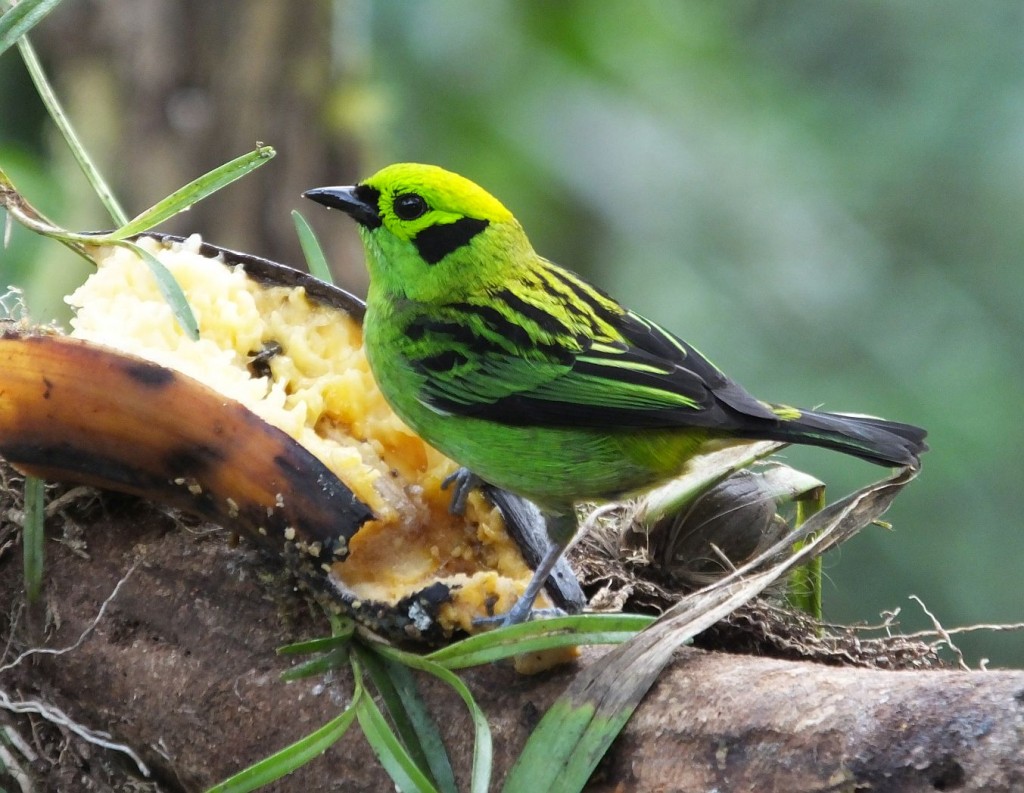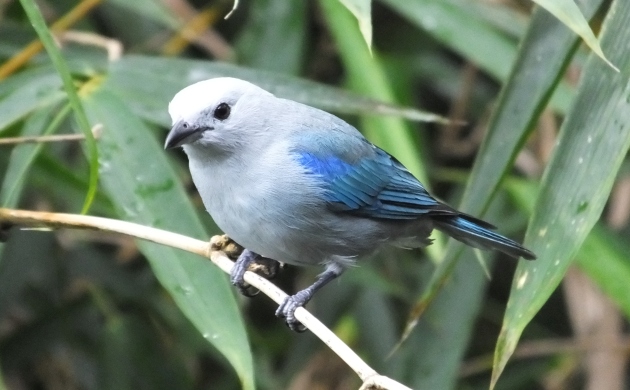All birding has value. Watching a Downy Woodpecker hitch its way up a backyard oak. Relaxing to the lazy serenades of Cedar Waxwings. It’s all good and it’s all appreciated. Connection with birds is connection with nature, and the experience is priceless.
And yet, most of us see far more woodpeckers than the shadow of a Gyrfalcon. Lots of birds are much easier to see than others, and to see most species, you gotta buy some plane tickets.

Species that are rare or very difficult to see also require far more investment than others. DYI a Swainson’s Warbler and you’ll probably be in for some mosquito bites, could end up spending hours before you glimpse one.
In Costa Rica, it’ll probably cost more to see a Black-crowned Antpitta. They don’t sing as much as those canebrake birds, are rarer, and tend to revel in the art of hiding. It can take days to see one, even in places where they are known to occur!
Pittasomas are avian royalty but luckily, Costa Rica has a lot of other birds too. Like literally hundreds. Costa Rica is some high value birding indeed. Here’s why:
More Bird Species in a Small Area
The country really is one giant hotspot. I’m not kidding. I mean I can go for a walk in an urban area plagued with morning traffic and still see Crimson-fronted Parakeets and White-fronted Parrots fly overhead, hear the laughter of a Lineated Woodpecker, and watch Blue-gray Tanagers in the palms.

I might also see a Short-tailed Hawk kite over the neighborhood, smile at a wintering Ruby-throated Hummingbird, and note 30 other bird species. It’s pretty nice and yet compared to the cloud-forest topped mountains visible during my walk, it’s ranks somewhat lower on the ladder of excitement!
Up there, only an hour’s drive away, quetzals call, and Flame-throated Warblers brighten mixed flocks replete with regional endemics. Between here and there, more than a dozen hummingbird species are zipping around, and three different nightingale-thrush species sing.

I head in the other direction, drive on down to the Pacific slope, and hundreds of other birds await. Birds like Scarlet Macaws, Double-striped Thick-Knees standing in open fields, spoonbills and egrets in the estuaries, trogons, motmots, puffbirds, and more (oh my!).
Yeah, the birding in Costa Rica really is crazy like that. The mountains give us literally hundreds of bird species within close range of each other. You don’t have to go far to see them, it’s a heck of a lot of birds for your time and expenditures (when a friend of mine and I have arranged 10 days tours, we have always seen more than 400 species).
A High Number of Endemics
Ok, but let’s say you don’t really care how many species you see. Let’s say you are more interested in the special birds, the ones only or mostly found in this little corner of the world.
Birding in Costa Rica can help you there too. Most of the birds in the mountains only live in Costa Rica and western Panama. There’s even one funny bird known as a Wrenthrush. Wren? Thrush? What?

Yes. Exactly. Wren or thrush or orange-coiffed weirdo, this funny little bird is so unique, it’s got its own little family thing going on! And if you know where to look, where to go birding in Costa Rica, it’s not even rare!
Head down to the Pacific and more endemics await. Throw in a few more on the Caribbean side of the mountains, and a handful of true country endemics, and there’s a lot special, local birds to look for. Maybe something like 90 special Costa Rica target species.
Easy to See Fancy Birds like Toucans, Macaws, Parrots, Curassows, and More
High value birding also takes the form of fancy birds. Dream birds. Birds you saw in books and thought, “no, that can’t be real, that’s gotta be a mistake”.
Yeah, nope, no mistake, nature is always far more amazing than we imagine, birds included. In Costa Rica, as with most tropical places, dream birds abound.

Toucans? Not rare! Parrots? Yeah, lots. Macaws? Two species and easy to see! Yes, you still have to know where to go and a good guide always makes the birding easier but in Costa Rica, dream birds are the norm.
Very Easy Birding Access
Another factor that adds value to birding in Costa Rica is the birding access. Yeah, for national parks, you may have to buy tickets in advance and most don’t open until eight but the access is still pretty easy.
Not to mention, there’s lots of excellent roadside birding, private reserves, and other places accessible on good roads. It’s very easy to go birding in Costa Rica, very easy to see well over one hundred species in a day.
Costa Rica is Pretty Close to the USA and Canada
This country isn’t very far either. Fly from Texas and it’s a few hours. Fly direct from New York and it’s only around six hours away! Costa Rica is much closer than you expect and is so much easier to visit than many places in the world.
Common Costa Rica Birds Include Brown Jay, Mottled Owl, Bare-throated Tiger-Heron, Golden-crowned Warbler…
Currently, lots of birders are seeing these species in Texas. However, they are only seeing them on guided trips at a private ranch, and they are shelling out a lot to do it.
There’s nothing wrong with that. In general, people are free to charge what they want for goods and services, and the people doing the buying decide how they want to spend their money.
Now, that said, one could argue that if they wanted to see those birds in the ABA region, then they also don’t have much of a choice. There’s a point to that but if the birds are on private property, well, what are you gonna do, that’s the deal.
However, if the deal doesn’t seem so great, you might want to consider another one. Like maybe seeing those birds somewhere else. Maybe not worrying about seeing bird species within human-contrived boundaries, but enjoying them in places where they are so common, you could even see them without a guide.
Look for those birds in Costa Rica and you’ll definitely see them. It won’t be hard either. Brown Jays and the other species are very common birds here, so common that although we do like to see them, we don’t exactly prioritize it.

Yes, as with all owls, it’s always good to see a Mottled Owl but since that’s probably our most common owl species, it’s not too hard to find one…
Think Blue Jays, Great Horned Owls, Tricolored Herons, and some common warbler. In Costa Rica birding terms, that’s pretty much what those birds are like.
So, instead of paying a hefty fee to see them in Texas, why not watch flocks of Brown Jays in Costa Rica along with bonus quetzals, 40 species of hummingbirds, dozens of tanagers, and like 300 or 400 other lifers?
Yeah, the trip would cost more and I know it’s not the same thing but I daresay that the value would be hard to beat. Paying a hefty, per person fee to see some nice birds for a day, or paying a similar per day amount to see those same birds, dozens of Red-billed Pigeons, dream birds, hundreds of other species…
Yeah, that might be a better deal.











